|
John
Deere (Deere and Company) in World War Two
Moline, IL
Waterloo, IA (Iowa Transmission Company, Division of John Deere)
1837-Present
This page updated 7-1-2019.
John Deere is the brand name
for Deere and Company, which had its beginnings in 1837 in Grand Detour,
IL. The company originally produced plows. Today,
its iconic green and yellow equipment is seen everywhere in
the United States. It has become an American icon.
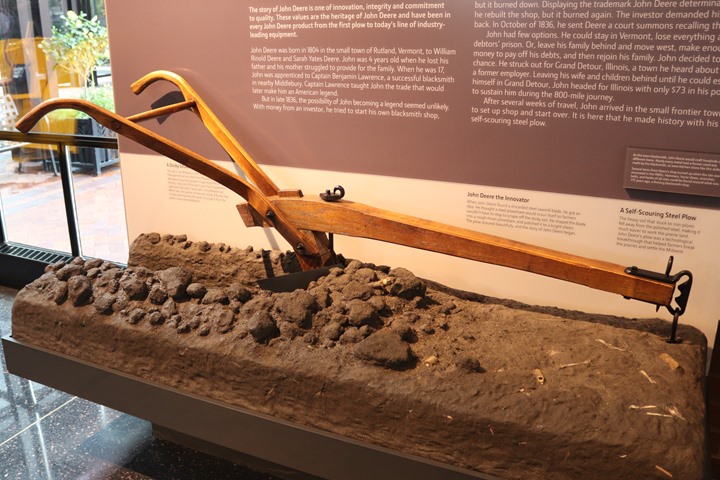
John Deere started by making plows with
steel rather than cast iron blades. This kept the rich black,
moist soil of the Midwest from sticking to the blades. This is one
of the many displays at the John Deere Pavilion in Moline, IL.
Author's photo added 7-1-2019.
Authors note:
This is the oldest company listed on this website. What a
long and successful run for this company! DDJ 8-27-2018
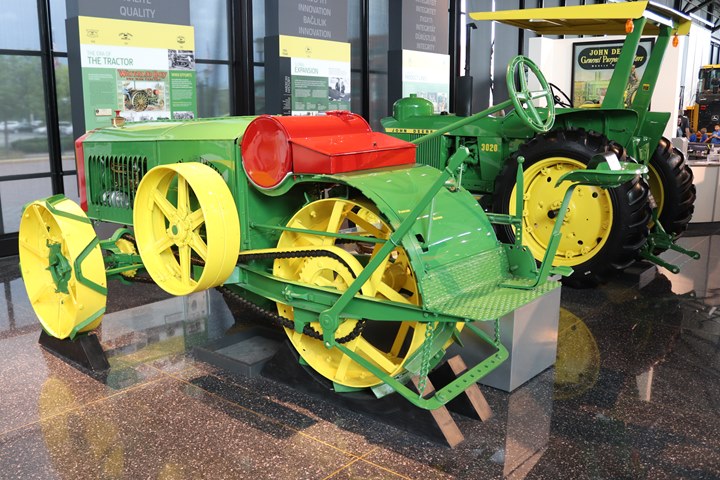
Also at the John Deere Pavilion is this 1917
four-wheel drive tractor, one of 90 built, and the most complete one
still in existence. This was John Deere's first tractor.
Author's photo added 7-1-2019.
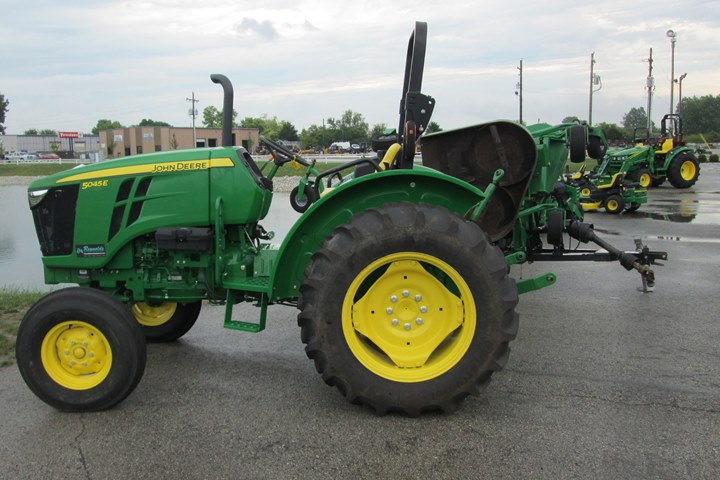
John Deere equipment with its
distinctive green with yellow trim. Author's photo.
I live in a farming area of Indiana and see many green and yellow John
Deere tractors and combines in the fields during the planting and
harvesting seasons. They are easy to identify versus other farm
equipment from other equipment manufacturers that have changed paint
colors over the years through mergers and new ownerships. I have
also found that farmers owning John Deere equipment are extremely loyal
to the brand. Much of this is due to something that happened 90
years ago; The Great Depression. Many farmers were not able
to make payments on their John Deere tractors due to the hard times the
Depression brought. John Deere worked with the farmers by
extending financing or allowing partial or delayed payments. The
farmers and their decedents who continued to work the farms
remembered this. Today John Deere brand loyalty still runs deep in
many farming families.

The Iowa Transmission Company, John Deere
Company Plant at Waterloo, IA won the Army-Navy "E" award five times
during WWII. The first award was in July 1942 for the timely delivery of
M3 and M4 tank transmissions.
John Deere
World War Two Production Statistics:
(2,190) High Speed 7-ton M2 Tractors, (5,270) Armored M8 Trailers,
(22,000) transmissions and final drive assemblies for M3 and M4 medium
tanks, ammunition ( Most likely shells or shell casings.), mobile
laundry units and aircraft parts. John Deere had over 1,000
military contracts during the war, so there is no doubt additional
statistics.
Author's Note: Below the first
and second photos from the John Deere Tractor and Engine museum show
that the company made ammunition during World War Two. I have
noted above that most likely this was a component of the ammunition,
either the shell or the shell casing, as were made by other vehicle
manufacturers during the war. Making the actual ammunition would
include assembly of the shell, shell casing, primer, and powder.
This was done exclusively at ammunition arsenals located in
remote areas, due to the possibility of an accidental explosion.
Ammunition arsenals encompassed large secure restricted areas. Therefore, I
believe the term ammunition is incorrect in this case. No doubt, John
Deere stamped out or machined ammunition components that were then
shipped to an arsenal for the more dangerous final assembly.
Most likely the John Deere ammunition
components were being shipped to the nearby Ankeny, IA Ordnance Plant
built in 1941, and managed by the U.S. Rubber Company. The plant
made billions of rounds of .30 caliber and .50 caliber machine gun
ammunition during World War Two. In 1947 John Deere bought the
industrial portion of the Ankeny Ordnance plant. Today it is the
John Deere Des Moines Works.
John Deere
World War Two
Vehicles
Accepted by Detroit Ordnance, US Army
The information below comes from "Summary Report of
Acceptances, Tank-Automotive Material, 1940-1945"
Published by Army Services Forces, Office, Chief of
Ordnance-Detroit, Production Division, Requirements and
Progress Branch
January 21, 1946. |
|
Type |
Same as |
1940 |
1941 |
1942 |
1943 |
1944 |
1945 |
Total |
| Tractor, High Speed, 7-ton, M2 |
Cleveland Tractor
Company "Cletrac" |
|
|
31 |
2,159 |
|
|
2,190 |
| Trailer, Armored, M8 |
|
|
|
1,704 |
3,566 |
|
|
5,270 |
|
Total |
|
|
|
1,735 |
5,725 |
|
|
7,460 |
Author's Note
and Disclaimer: The Detroit Office
of Ordnance of the U.S. Army was the primary purchasing entity for
vehicles for the U.S. Army during WWII. It also purchased vehicles
for the USMC, US Navy, and for Lend-Lease. However, there were
other organizations that also purchased vehicles including the Army
Corps of Engineers, U.S. Army Air Force, U.S. Army Signal Corps, Navy
Bureau of Ordnance, Navy Bureau of Aeronautics, and foreign countries
making direct purchases.
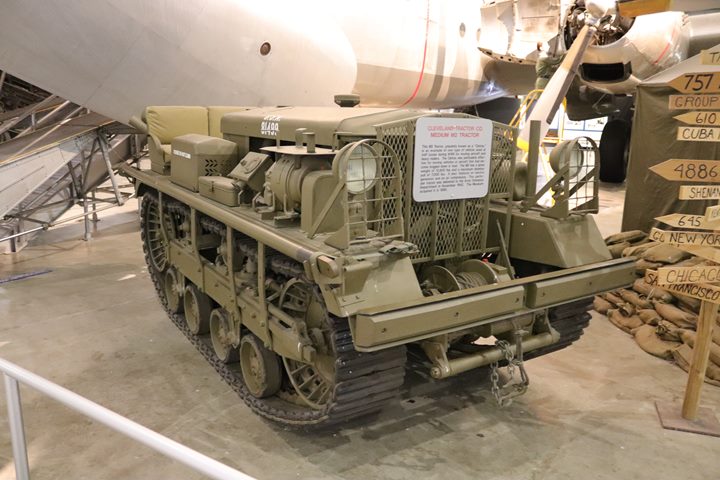
The Cleveland Tractor Company designed the
7-ton M2 High-Speed tractor for the U.S. Army to be used as an artillery
prime mover. However, the "Cletrac" as it came to be known, was
used extensively by the USAAF to move aircraft at unprepared airstrips.
Between John Deere and the Cleveland Tractor Company a total of 8,510
were built. John Deere's production of 2,190 was 26% of the total
units produced. Pictured here is a Cleveland Tractor built M2 on
display at the Museum of the United States Air Force. Author's
photo.
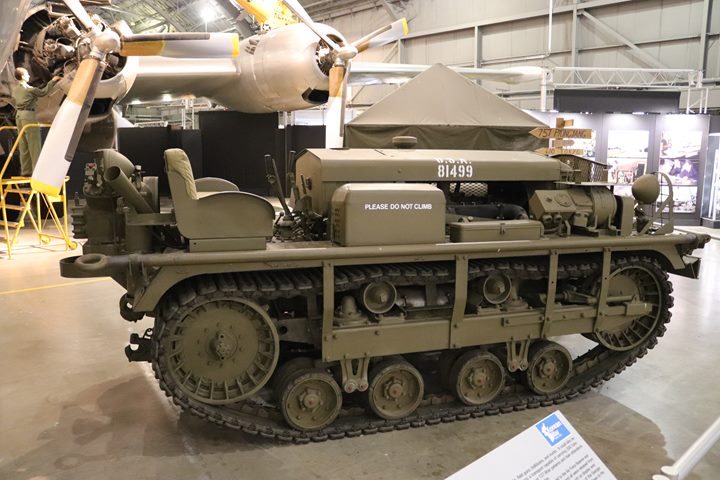
Author's photo.

John Deere was the only producer of the M8
Armored Trailer.
John Deere Tractor and Engine Museum,
Waterloo, IA World War Two Display: My early attempts to find
information on John Deere produced virtually nothing. Then in July
of 2018, my son made a business trip to one of the John Deere plants in Waterloo,
IA. Afterwards, he went to the museum which had the World War Two
display shown below. With this and some other new information I
had just recently obtained, I have been able to assemble this page on
John Deere in World War Two.
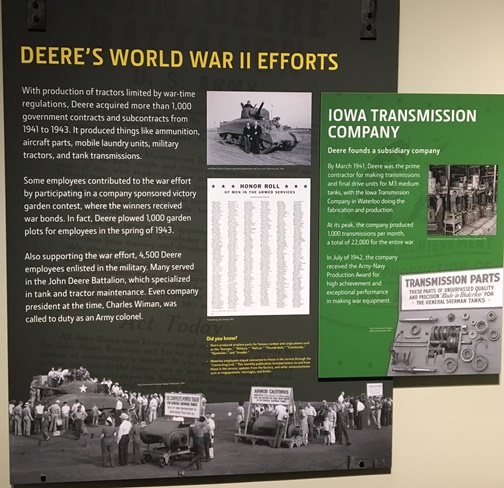 \ \
Photo courtesy of David D. Jackson, Jr.
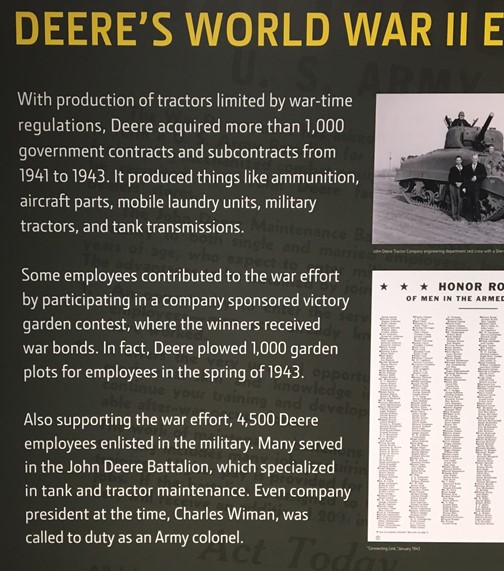
Photo courtesy of David D. Jackson, Jr.
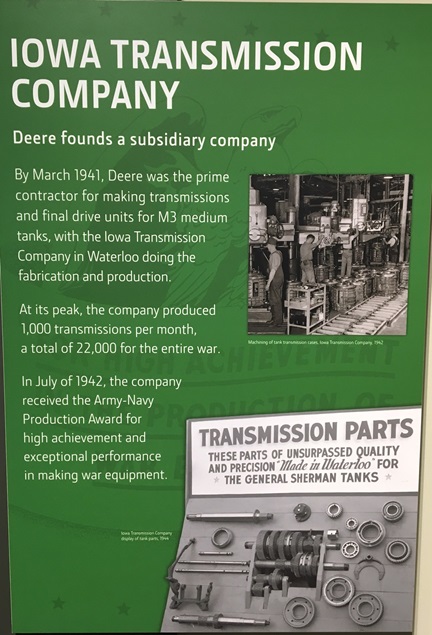
As noted above, the Iowa Transmission
Division of John Deere in Waterloo, IA was the prime
transmission and final drive assembly contractor for the M3 medium tank.
5,958 M3 medium tanks were produced in 1941-1942. The display
above also references the M4 Sherman medium tank which started
production in 1942, replacing the M3 on the assembly lines. The
22,000 transmissions and final drive assemblies produced at Waterloo
were spread over the two types of tanks and one type of tank destroyer,
the M10 Wolverine. The transmissions
and final drive assemblies were interchangeable between the two tanks
and the M10.
John Deere and its Iowa Company Transmission plant had combined total
contracts for transmissions and final drive assemblies worth $6,139,050
in World War Two. Photo courtesy of David D. Jackson, Jr.
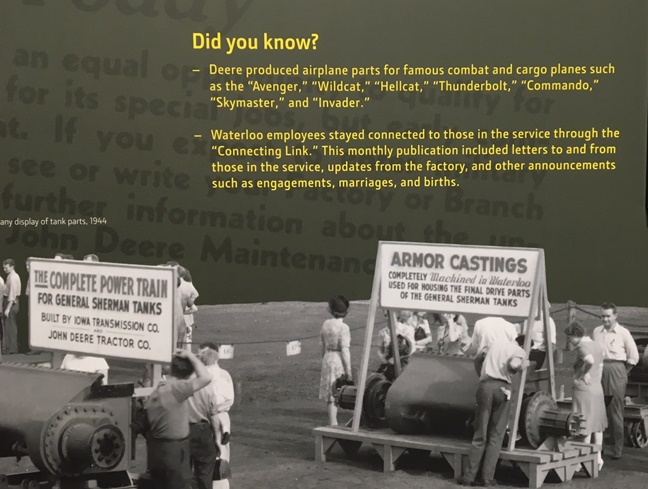
The top section of the display shows that
John Deere also made aircraft parts for several very important and
famous American military aircraft. The right portion of the photo
correctly implies that Waterloo purchased the final drive armor casting
and only did the machining. Other companies made the castings. The left display in the photo implies
that some of work for the transmissions and final drive assemblies was
done in its plants in Moline, IL. Photo courtesy of
David D. Jackson, Jr.
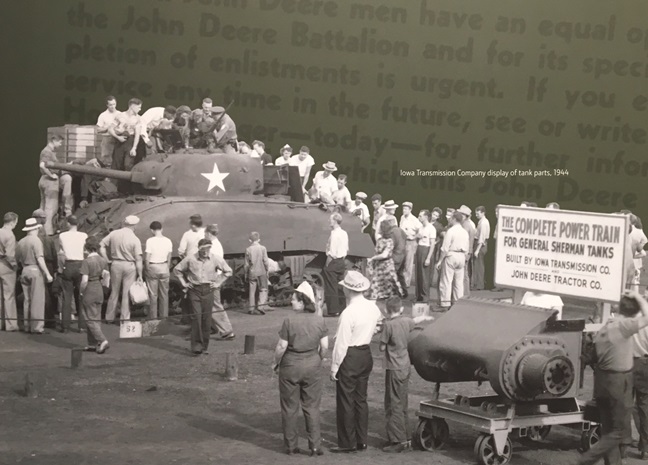
The tank in the photo is a M4A1 Sherman tank
with a 75mm main gun. Photo courtesy of David D. Jackson, Jr.
John Deere Pavilion, Moline, IL:
I was able to find out more information at the John Deere Pavilion in
June 2019. There were several new pieces of information found
here.
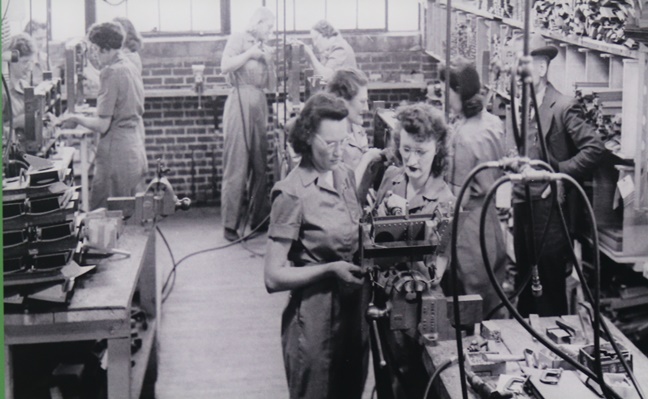
In 1943 the John Deere
Harvester Works in East Moline, IL was making aircraft parts.
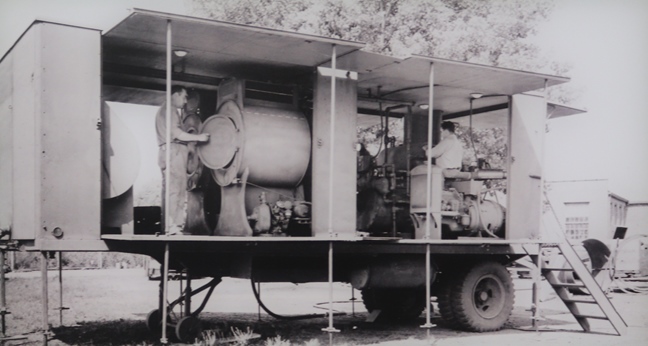
Mobile laundries were built at John Deere Wagon Works
in Moline, IL.
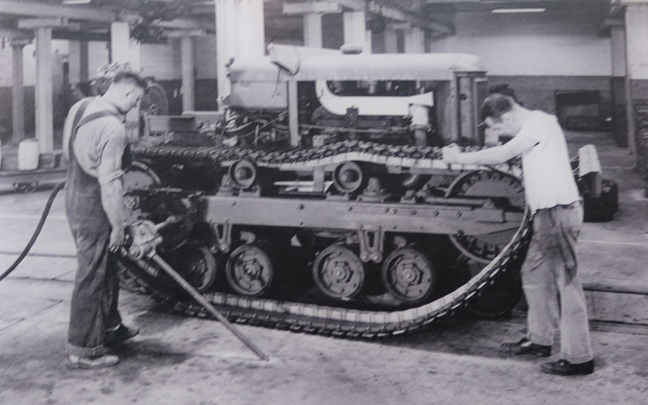
Workers are assembling a M2 High Speed
Tractor at the Moline War Assembly Plant in 1943.
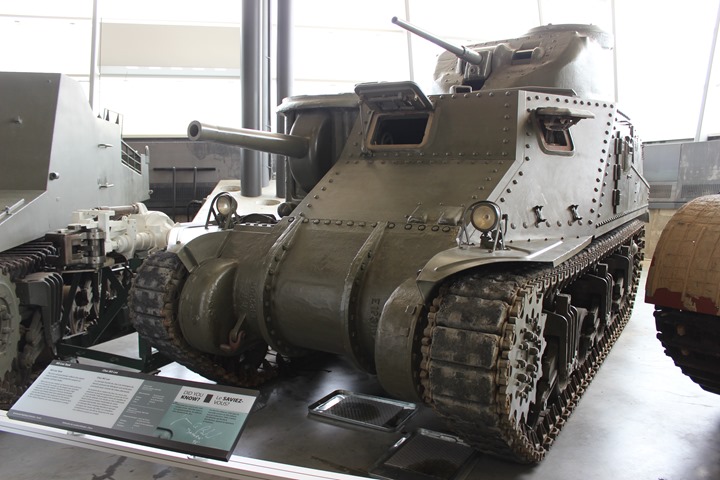
This M3 Medium tank has the original three-piece casting for the final drive assembly. As the war progressed,
it was replaced with the one-piece casting shown in the photo below.
Author's photo.
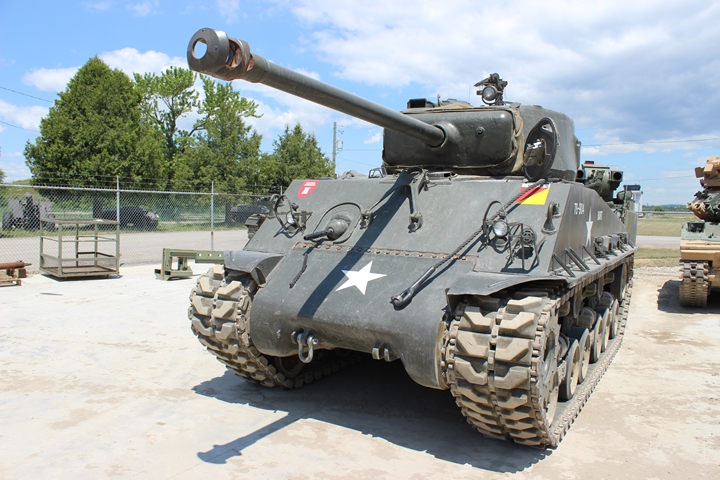
This Fisher Body built M4A2(76) was one of
49,234 M4 series tanks built during World War Two. This has the
more modern one-piece casting for the final drive assembly.
Author's photo.
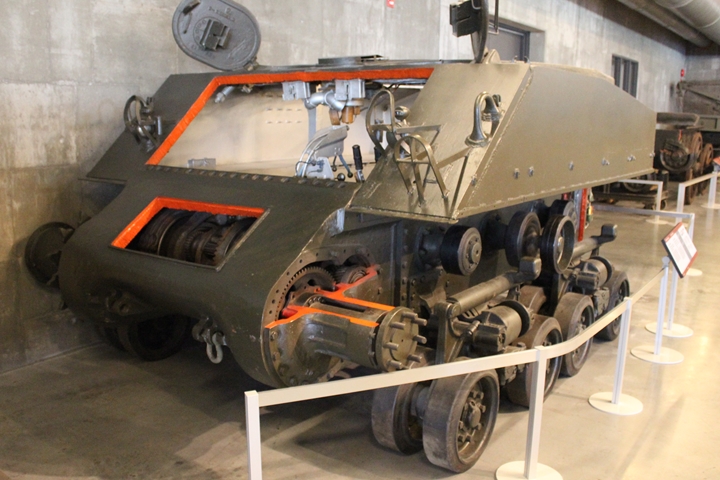
This is a cutaway of a M4A2 Sherman tank at
the Canadian War Museum in Ottawa, ONT. It allows an in-depth look
at the transmissions and final drive assemblies that John Deere
manufactured. The engine was in the rear of the tank, and a drive
shaft came through the crew compartment to the rear of the transmission.
From there, the power was transmitted to the tracks by the final drive
assembly. The front axle assembly can be seen here. Author's
photo.
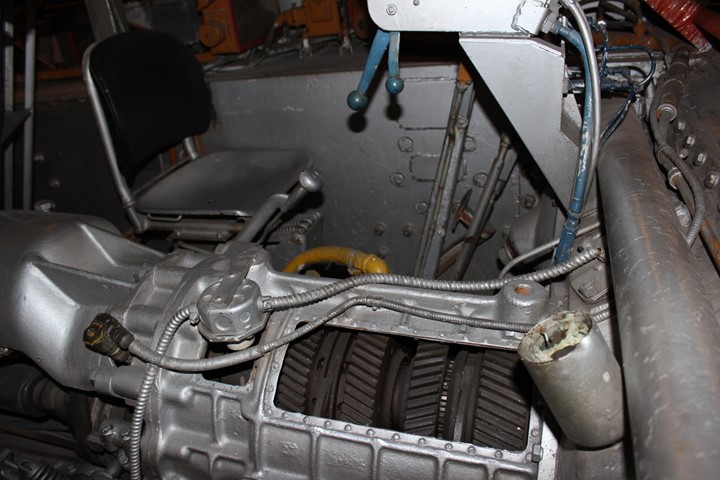
The driveshaft from the engine can be seen
in the lower left. The internal gears that John Deere manufactured
can be seen assembled into the transmission. Author's photo.
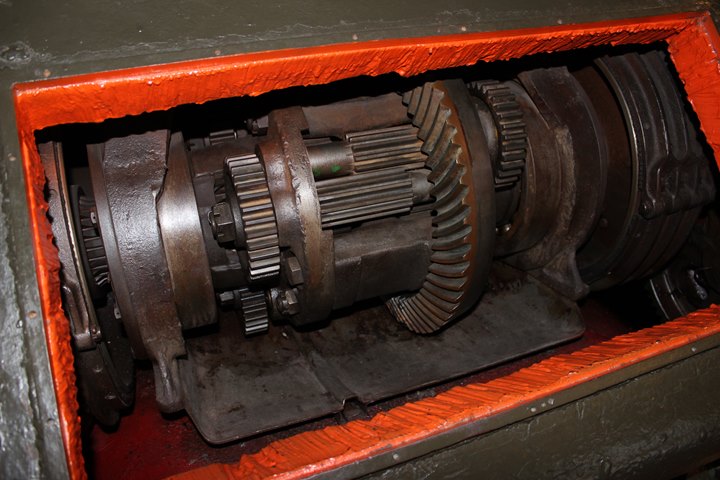
Here the gearing can be seen in the final drive assembly. Author's
photo.
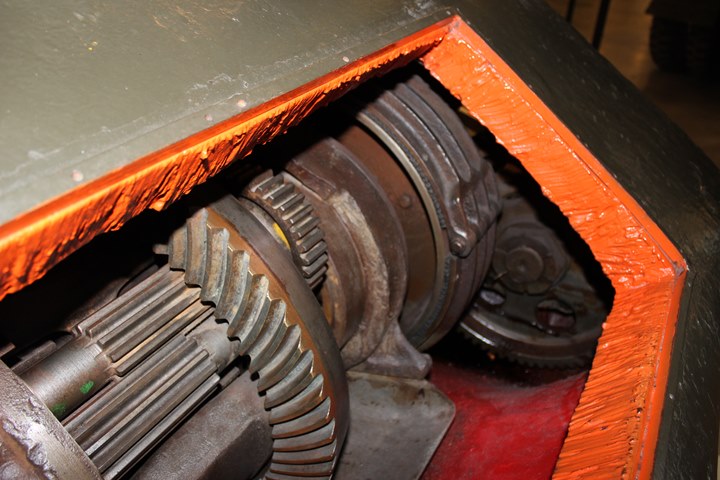
The driver side disk brakes for the Sherman
tank can be seen in the back of the photo. Author's photo.
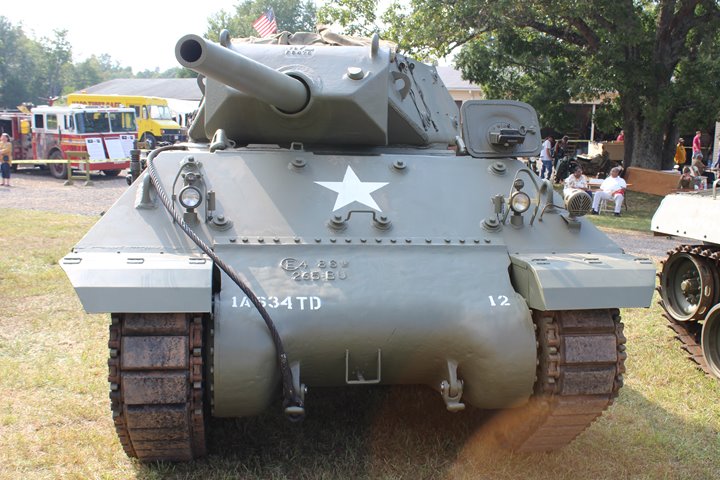
The M10 Wolverine used the same transmission
and final drive assembly as the M3 and M4 tanks. Author's
photo.
Aircraft Components: As noted in the John Deere Tractor and
Engine Museum display shown above, John Deere made aircraft parts for
the Grumman TBM Avenger, Grumman F4F/FM-2 Wildcat, Grumman F6F Hellcat,
Republic P-47 Thunderbolt, Curtiss C-46 Commando, Douglas C-54 Skymaster,
and the Douglas A-26 Invader. This is a very impressive list of
American World War Two aircraft, for which John Deere manufactured
parts.
While the type and number of parts are
unknown, below are photos of the types of aircraft with which John Deere
was involved.
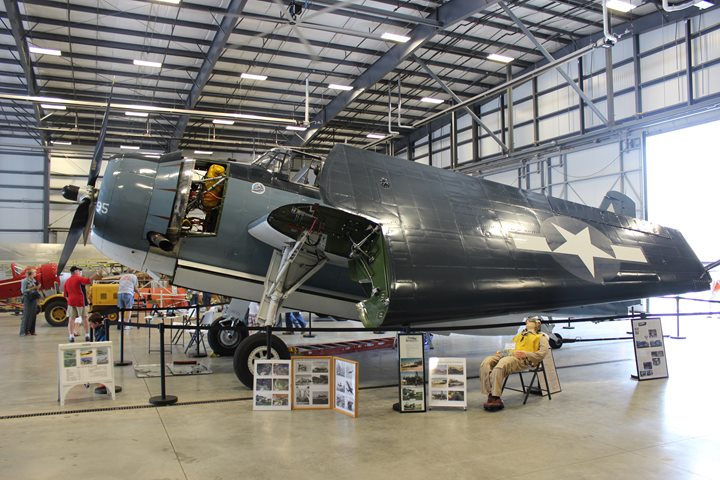
Grumman TBM Avenger. The TBM was
designed by Grumman but the Eastern Aircraft Division of General Motors
built the aircraft. The TBM was the American Navy's main torpedo
bomber during World War Two. Author's photo.
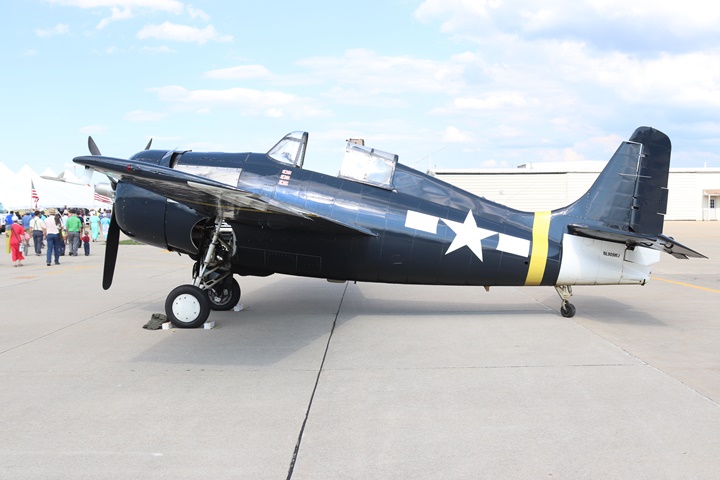
Grumman FM-2 Wildcat. The Wildcat was designed by Grumman, but the
Eastern Aircraft Division of General Motors built the FM-2 version of
the aircraft like this one. Author's photo.
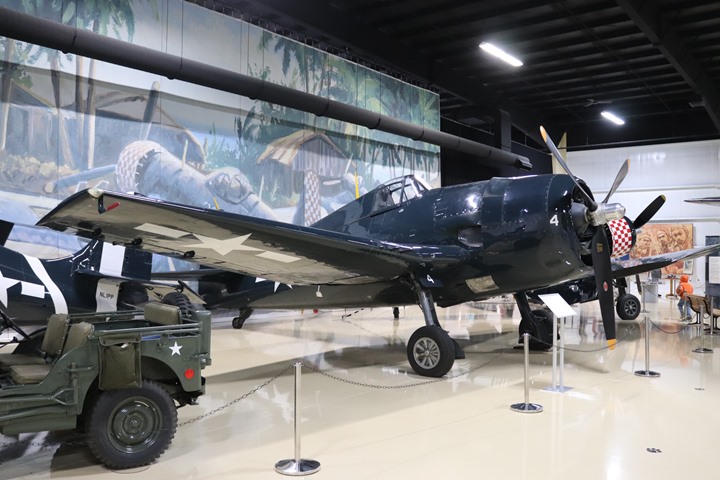
Grumman F6F Hellcat. Grumman was the exclusive builder for the
F6F. John Deere parts in the F6F Hellcat helped it destroy more
Japanese aircraft than any other plane during the war. The Grumman
Hellcat shot down 5,160 Japanese warplanes. Author's photo.
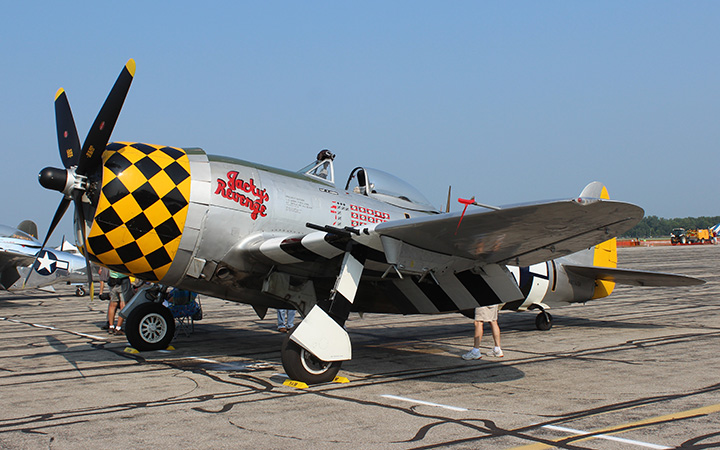
The Republic P-47. Republic built the
P-47 in both Farmingdale, NY and Evansville, IN. It was the
biggest and most heavily armed American fighters of World War Two.
Author's photo.
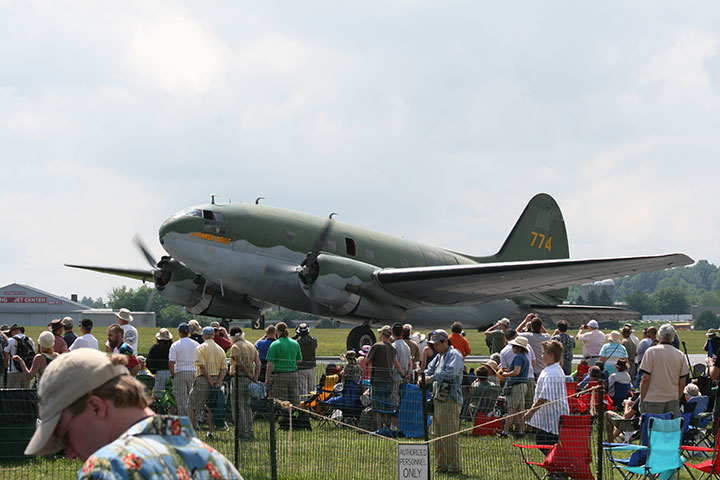
The Curtiss C-46 Commando. This was the largest twin engine
transport of World War Two. Author's photo.
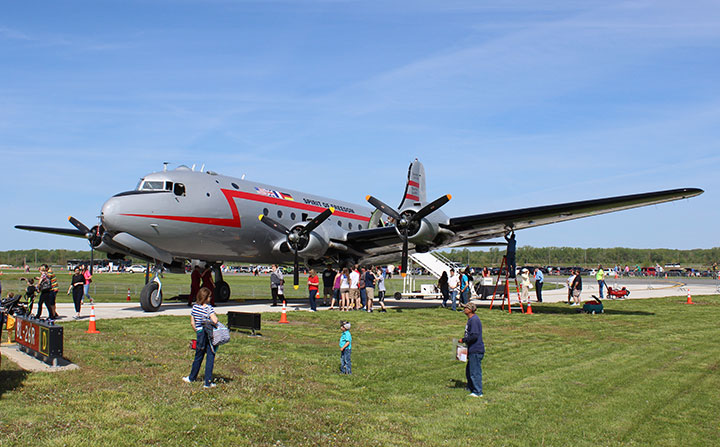
The Douglas C-54 Skymaster was the only
American four-engine transport during World War Two. Author's
photo.
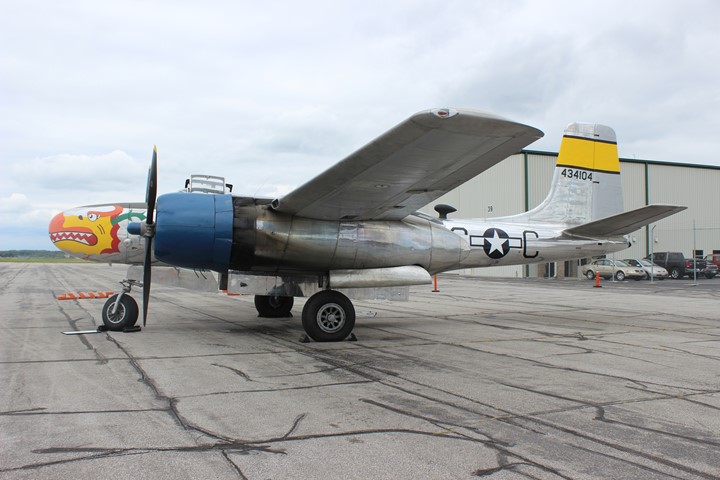
The Douglas A-26 Invader arrived late in the
war and saw limited service. The John Deere components in the
aircraft helped the A-26 fly later in both the Korean and Vietnam
conflicts. Author's photo.
Current Military Products:
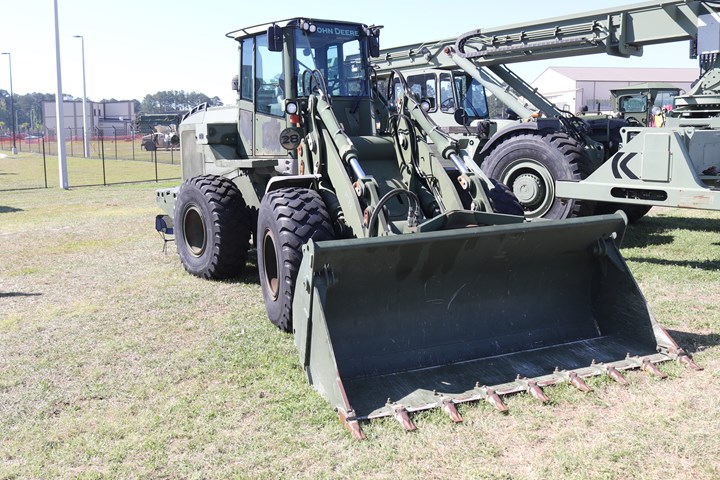
This John Deere front end loader was seen at
the 2019 MCAS Beaufort, SC airshow. It appears to be one of 300
front end loaders built for the USMC and designated at 624J TRAM.
TRAM is a military acronym for tractor, rubber-tired,
articulated-steering, multi-purpose vehicle. Author's photo added
7-1-2019.
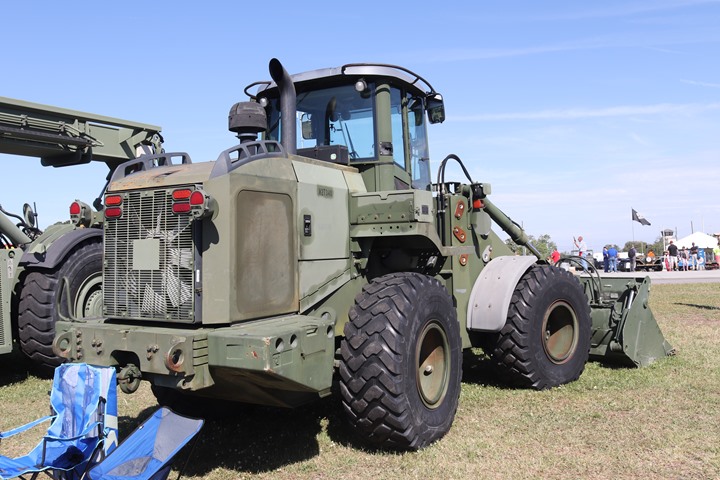
Author's photo added 7-1-2019.
|







 \
\





















